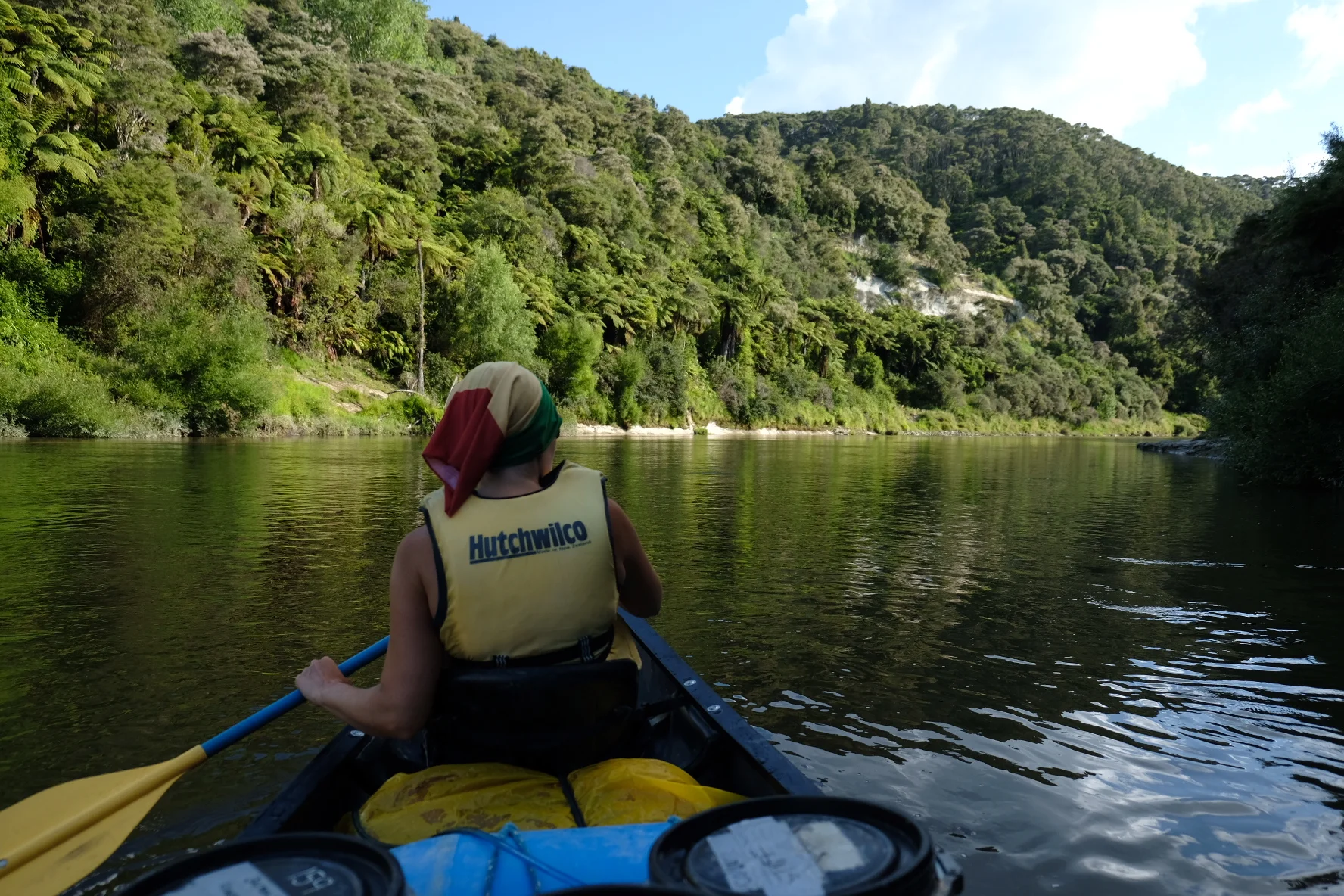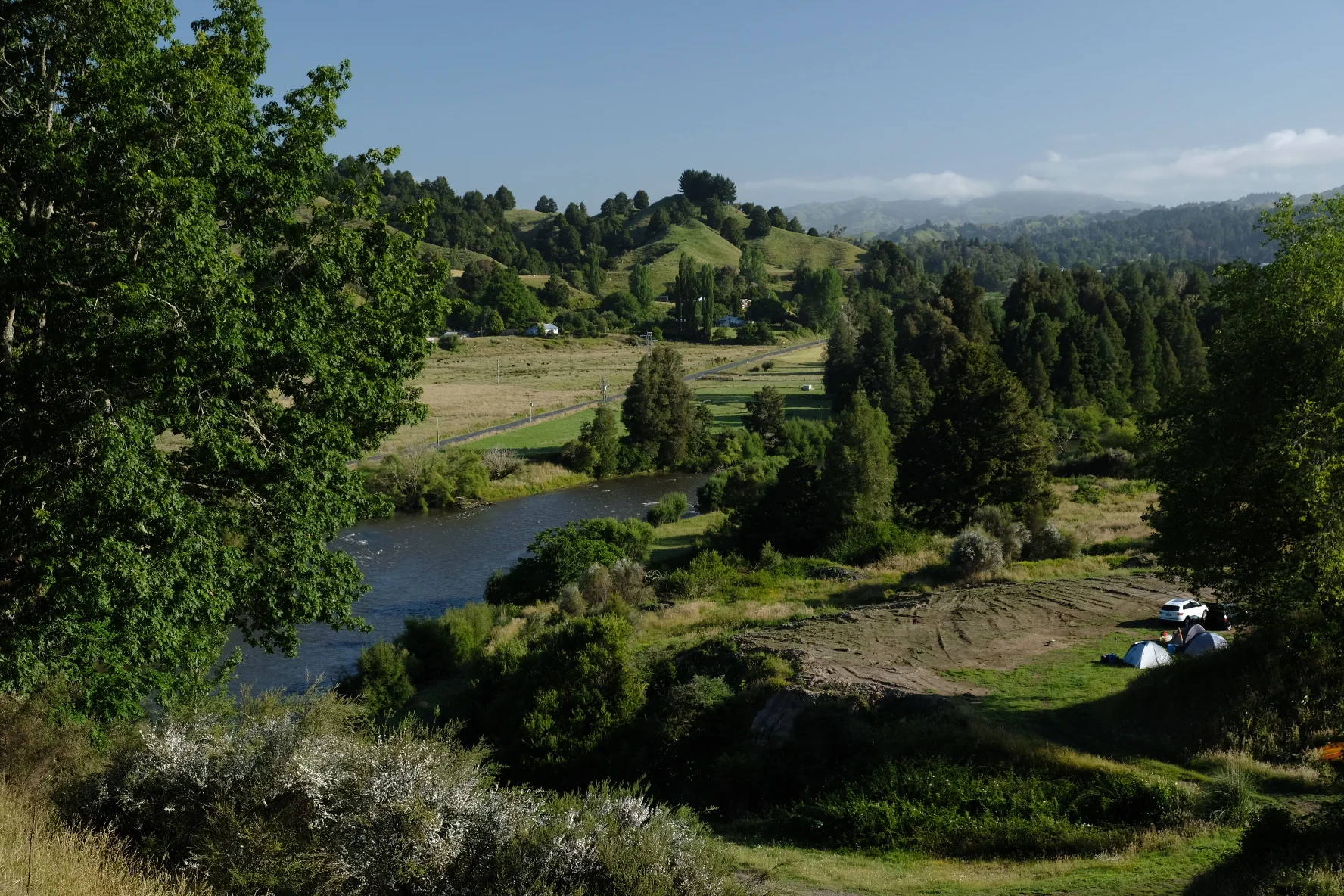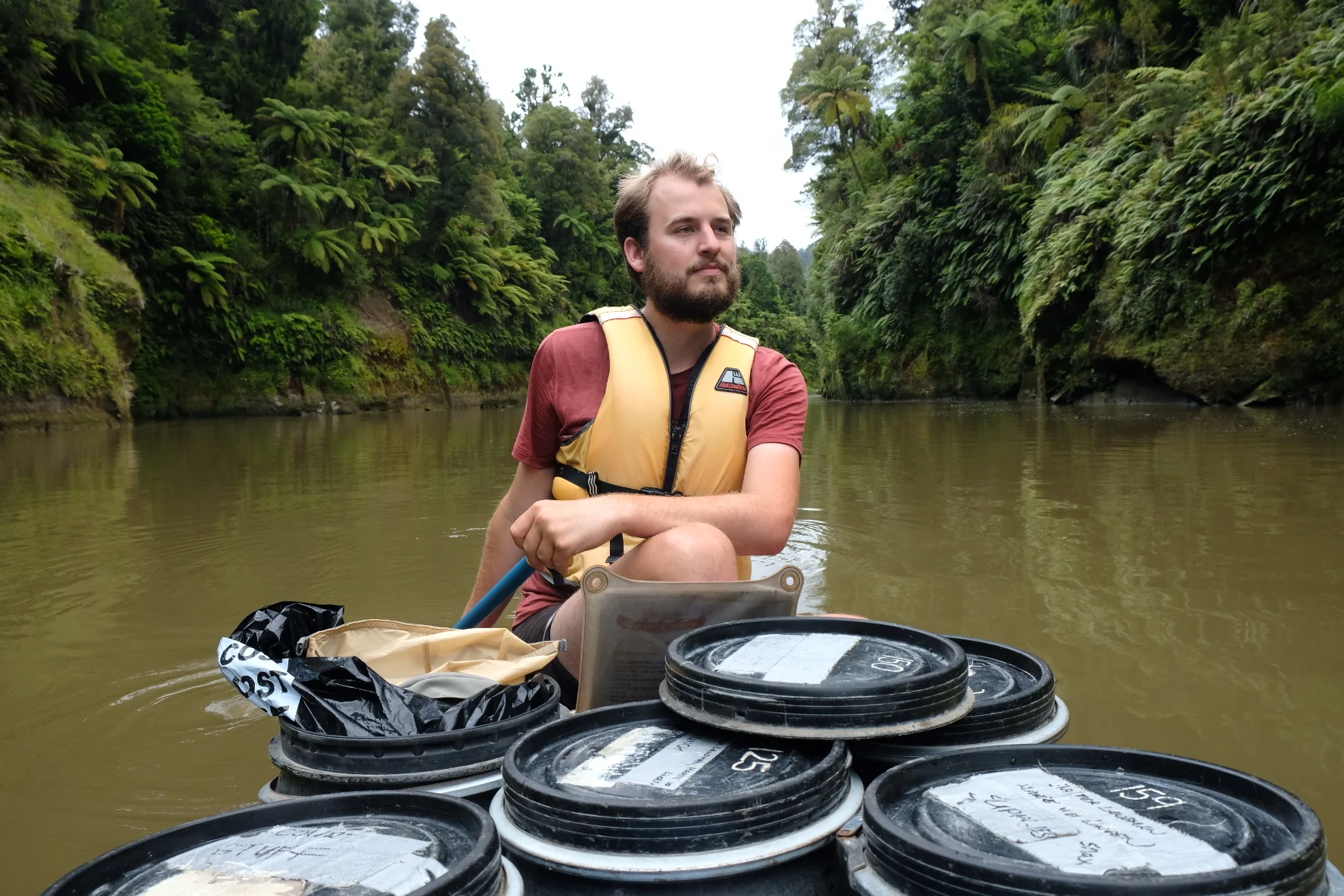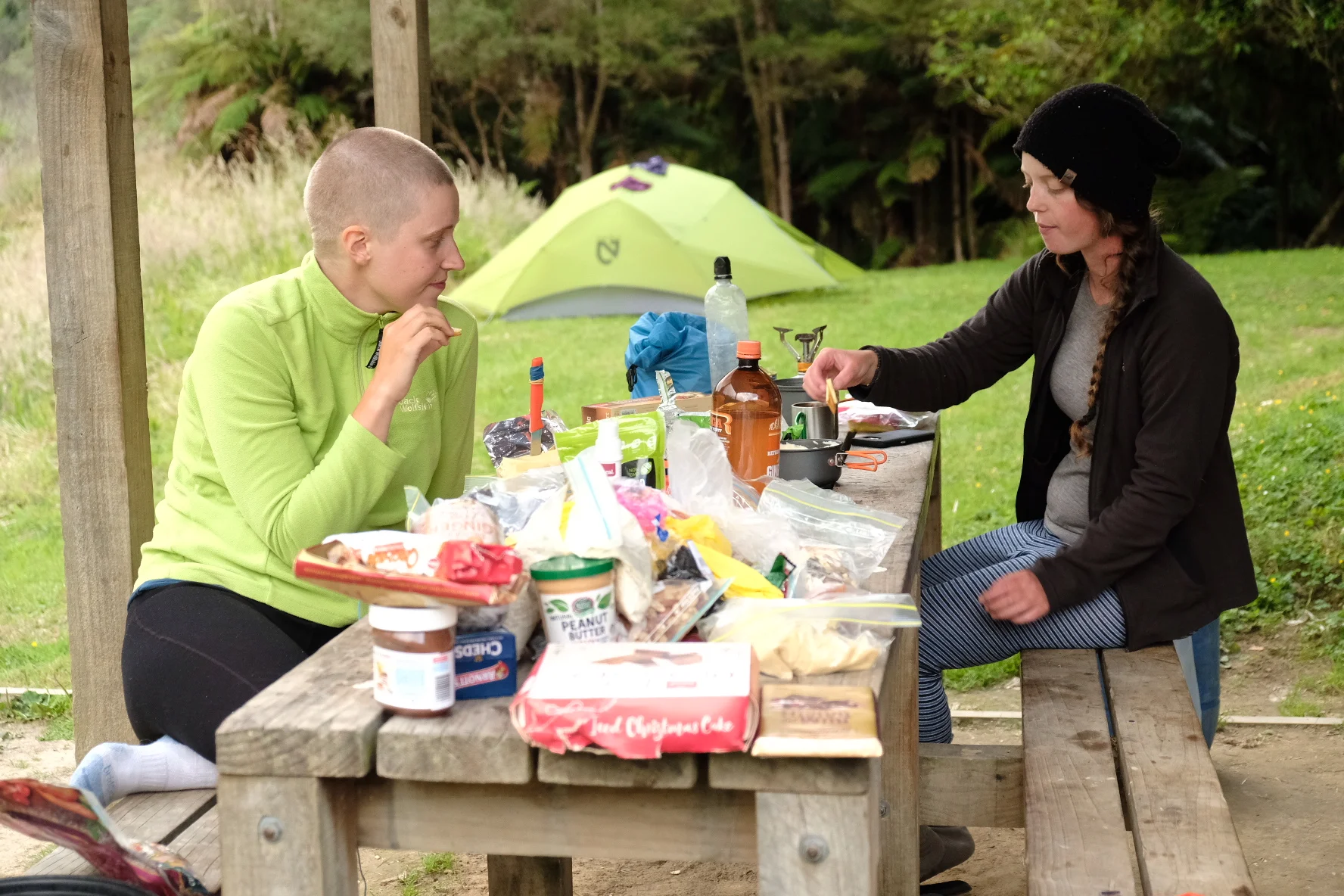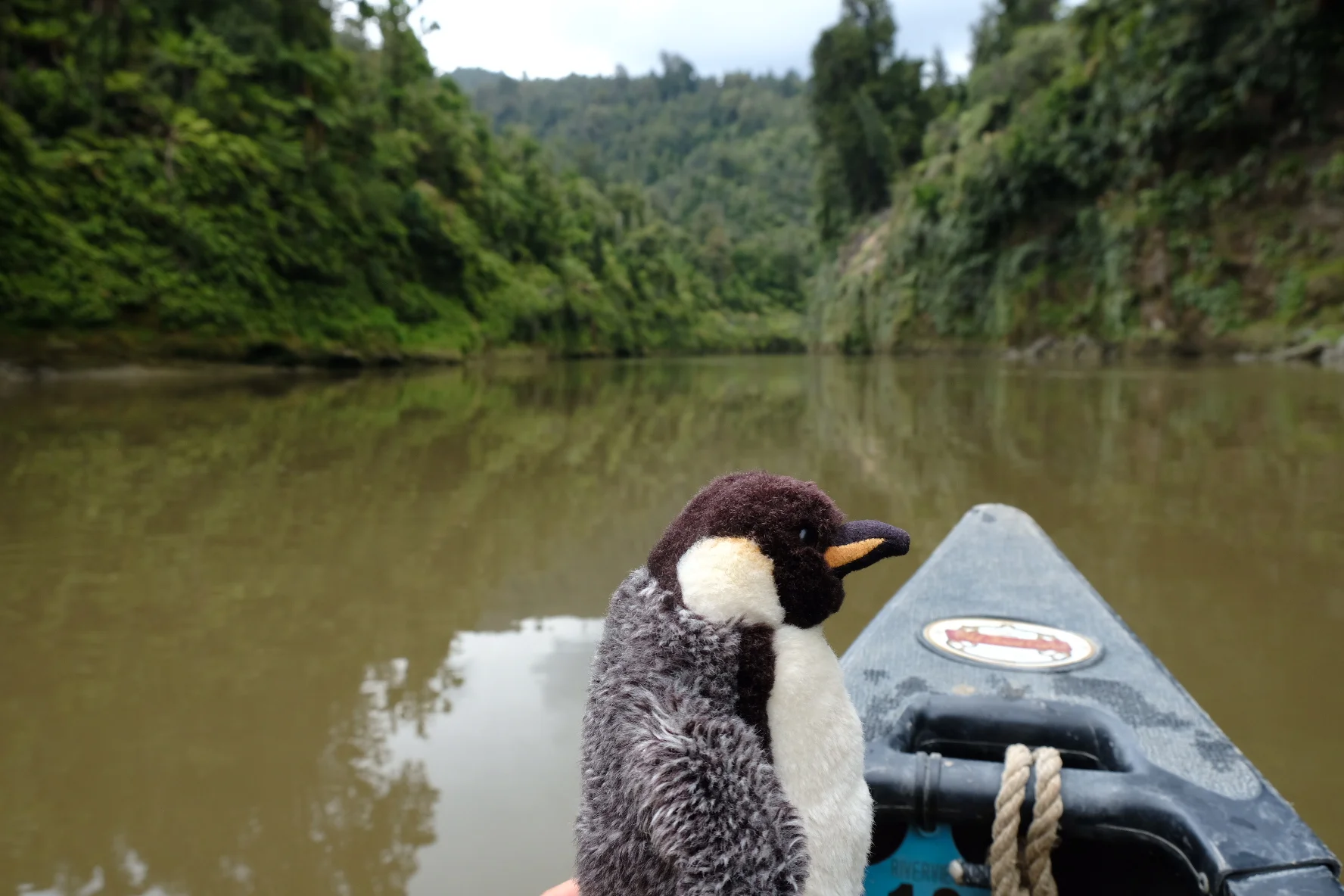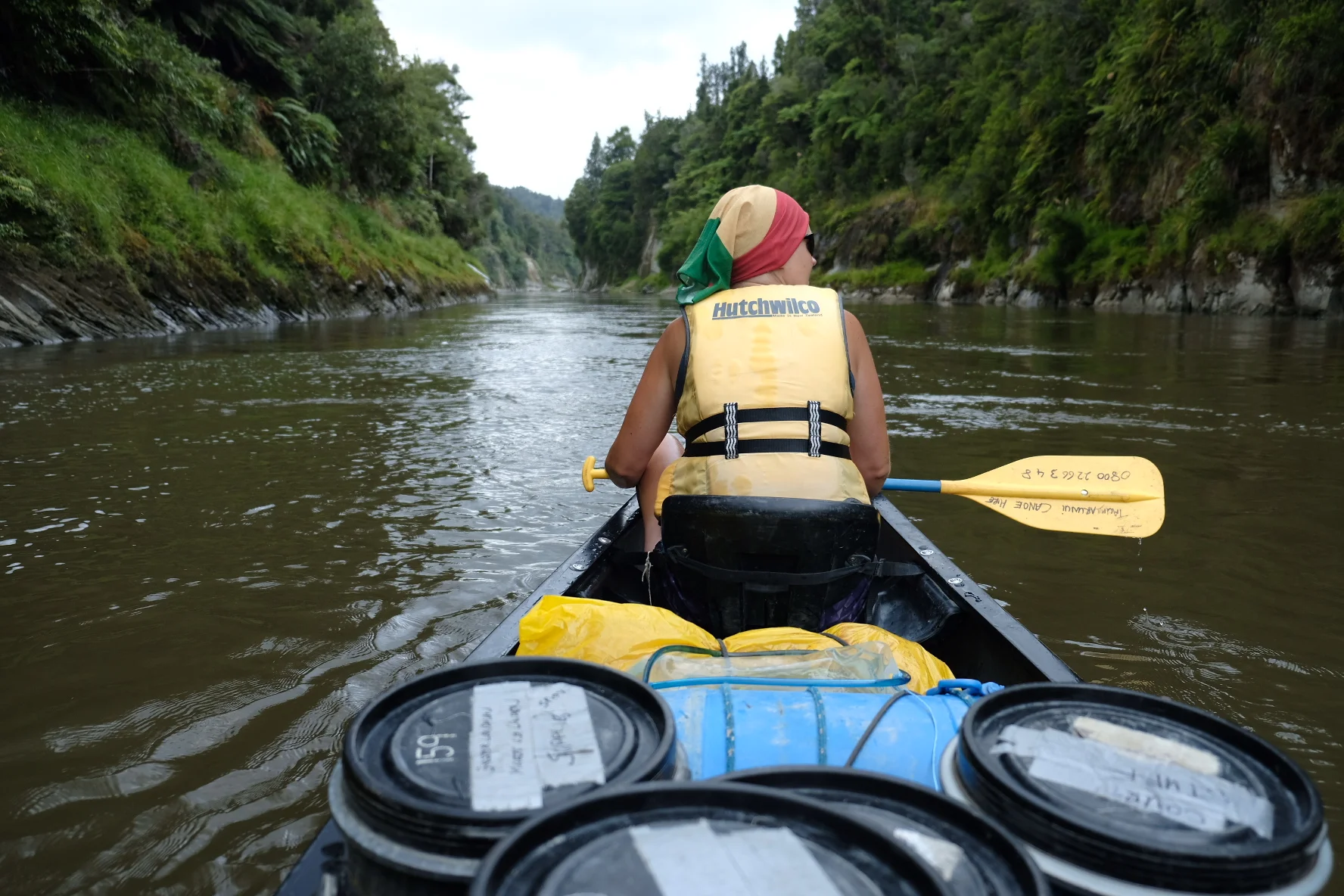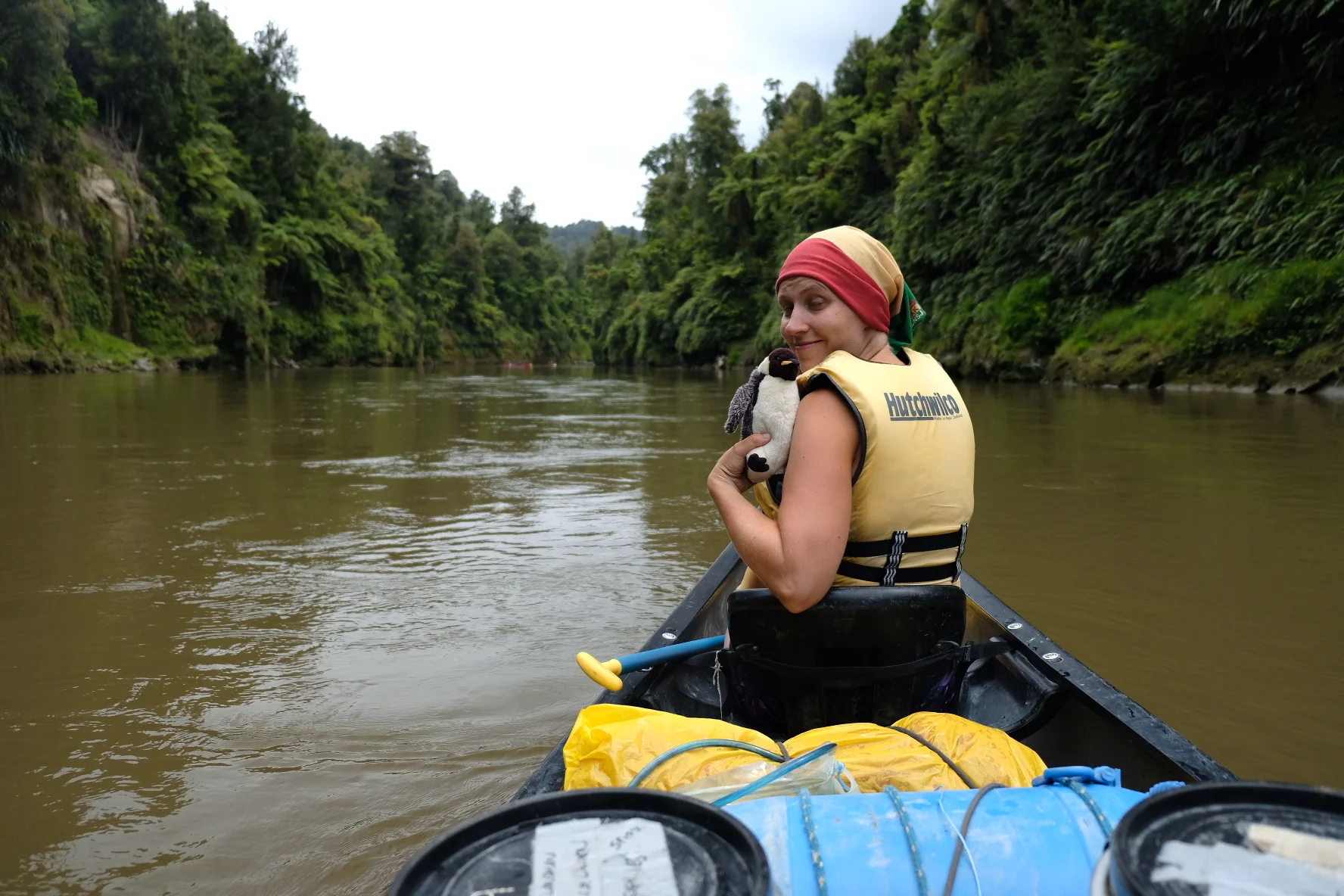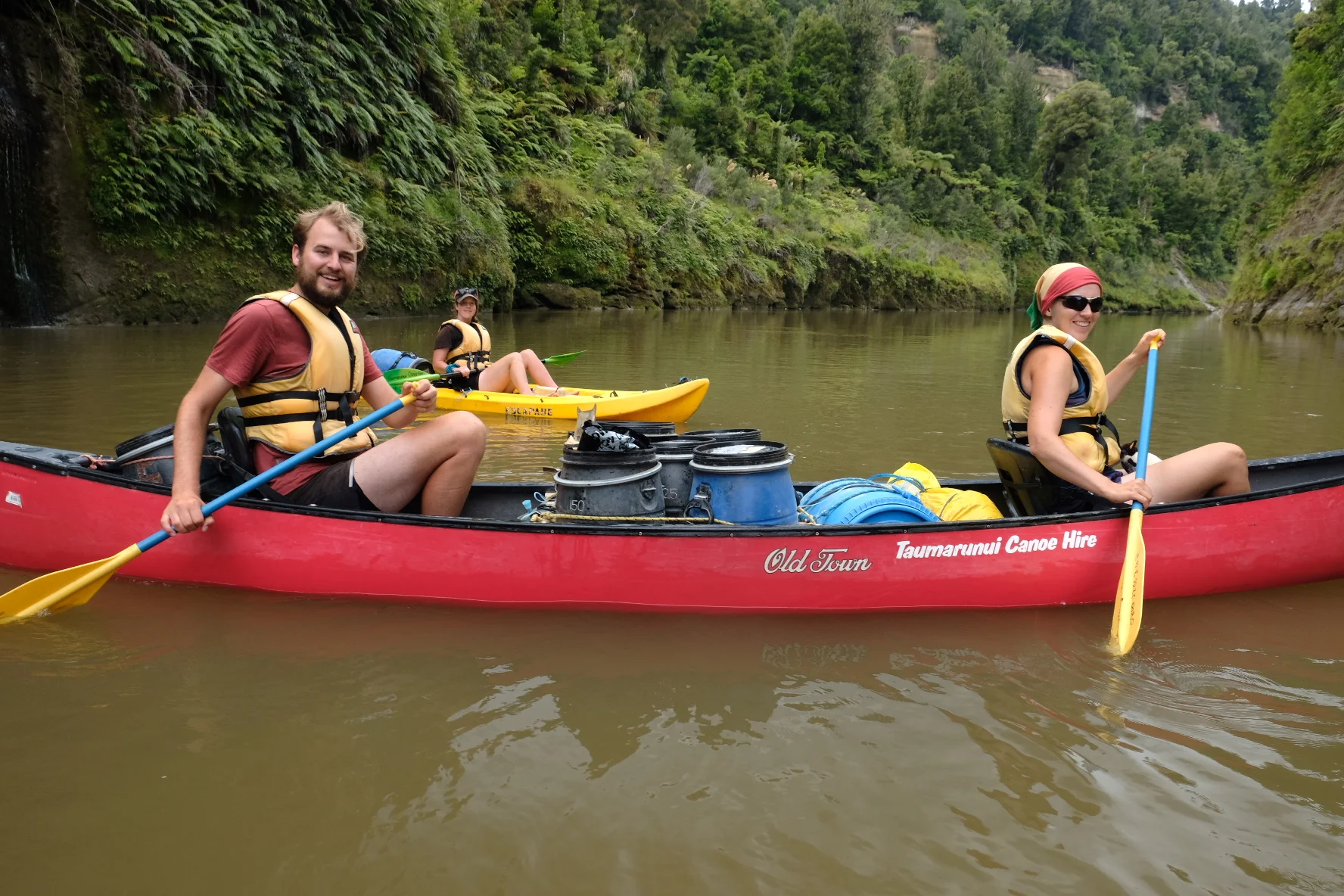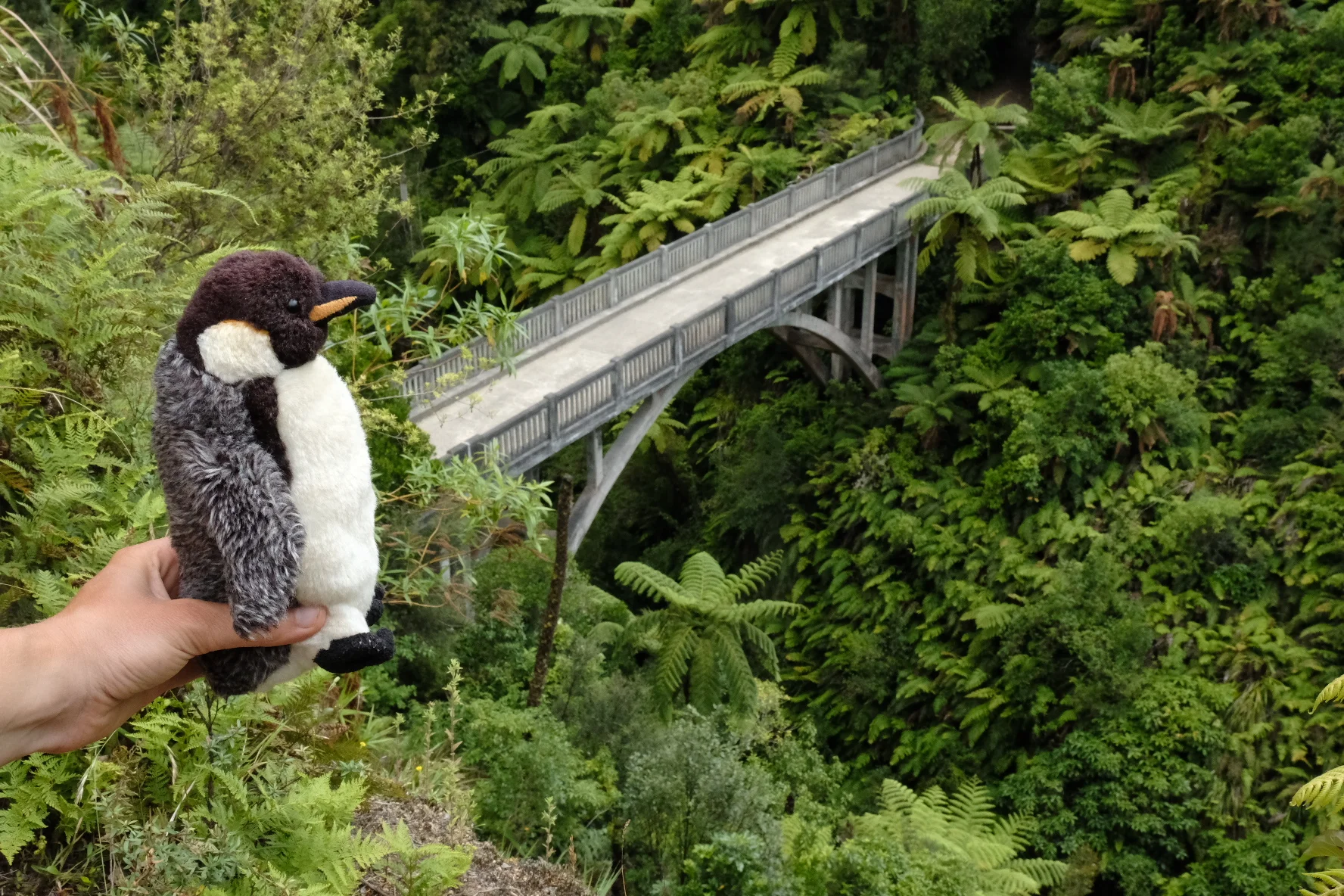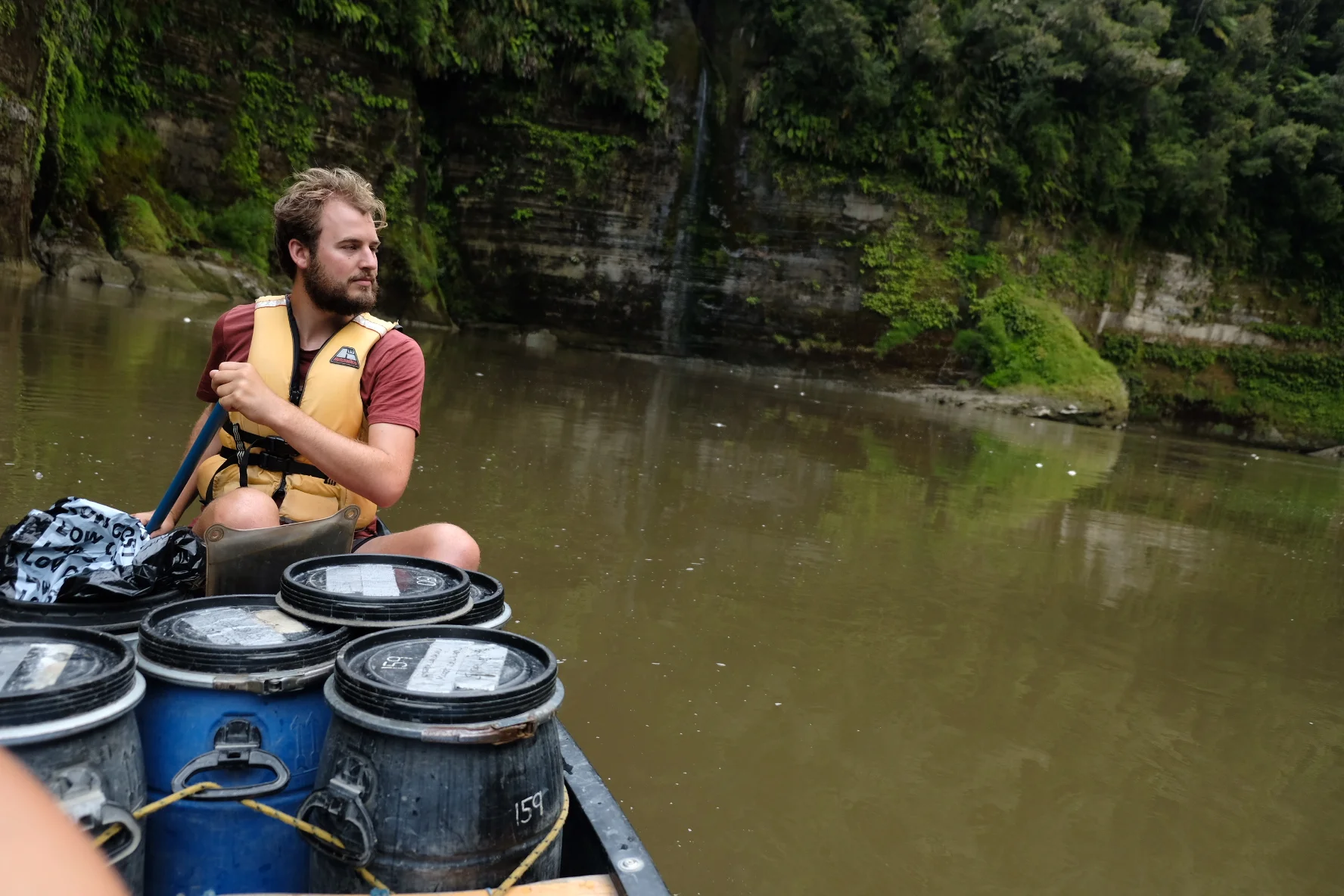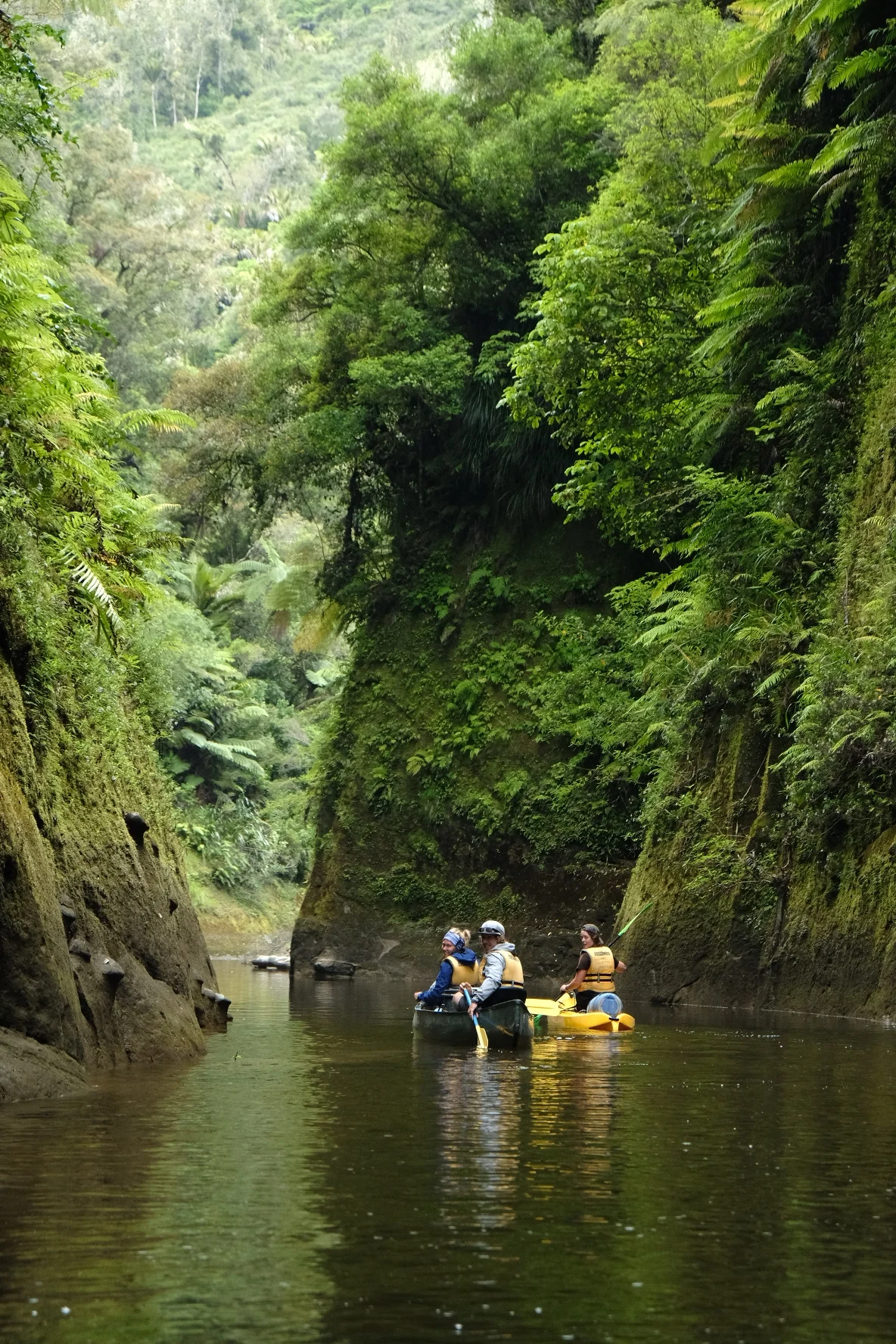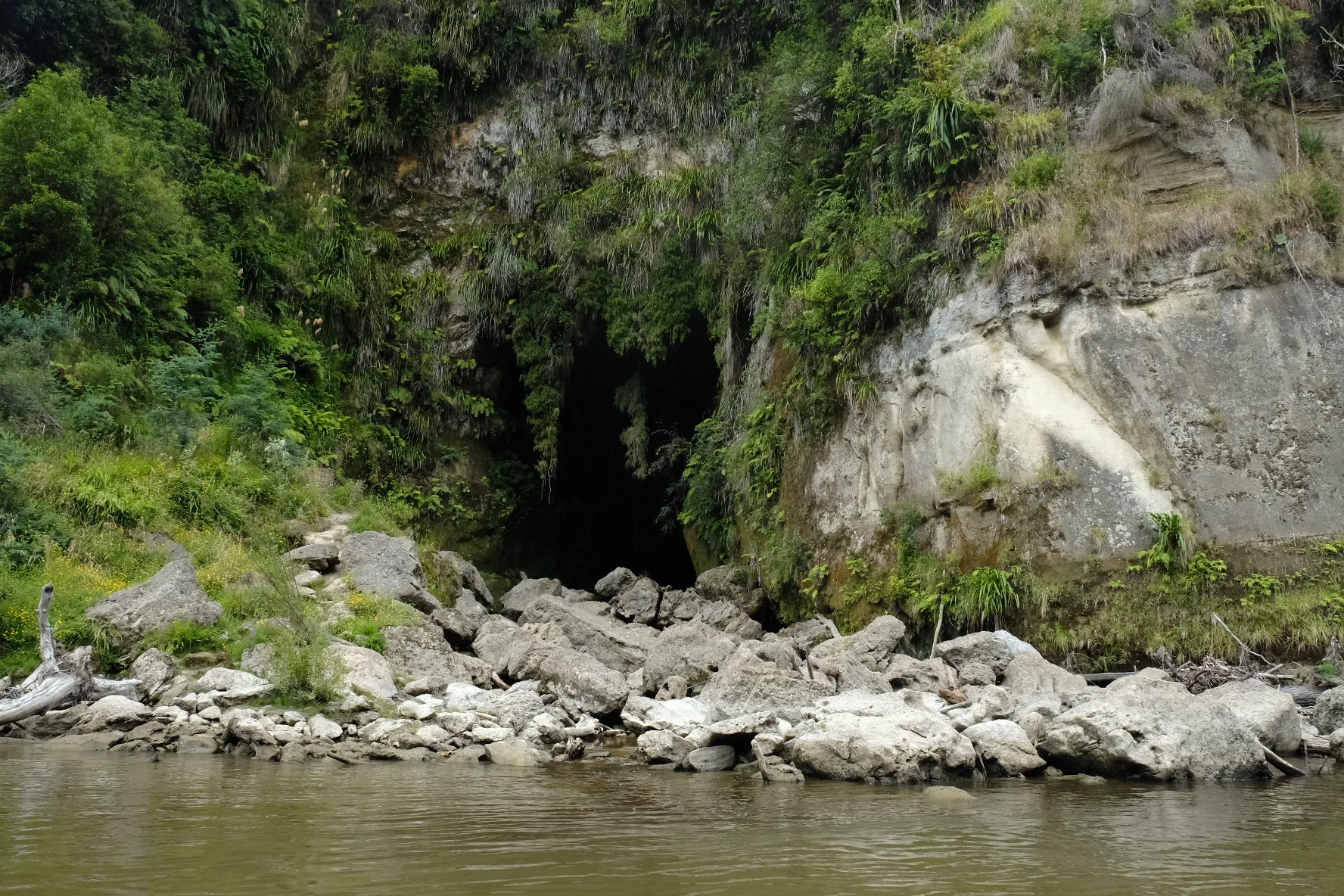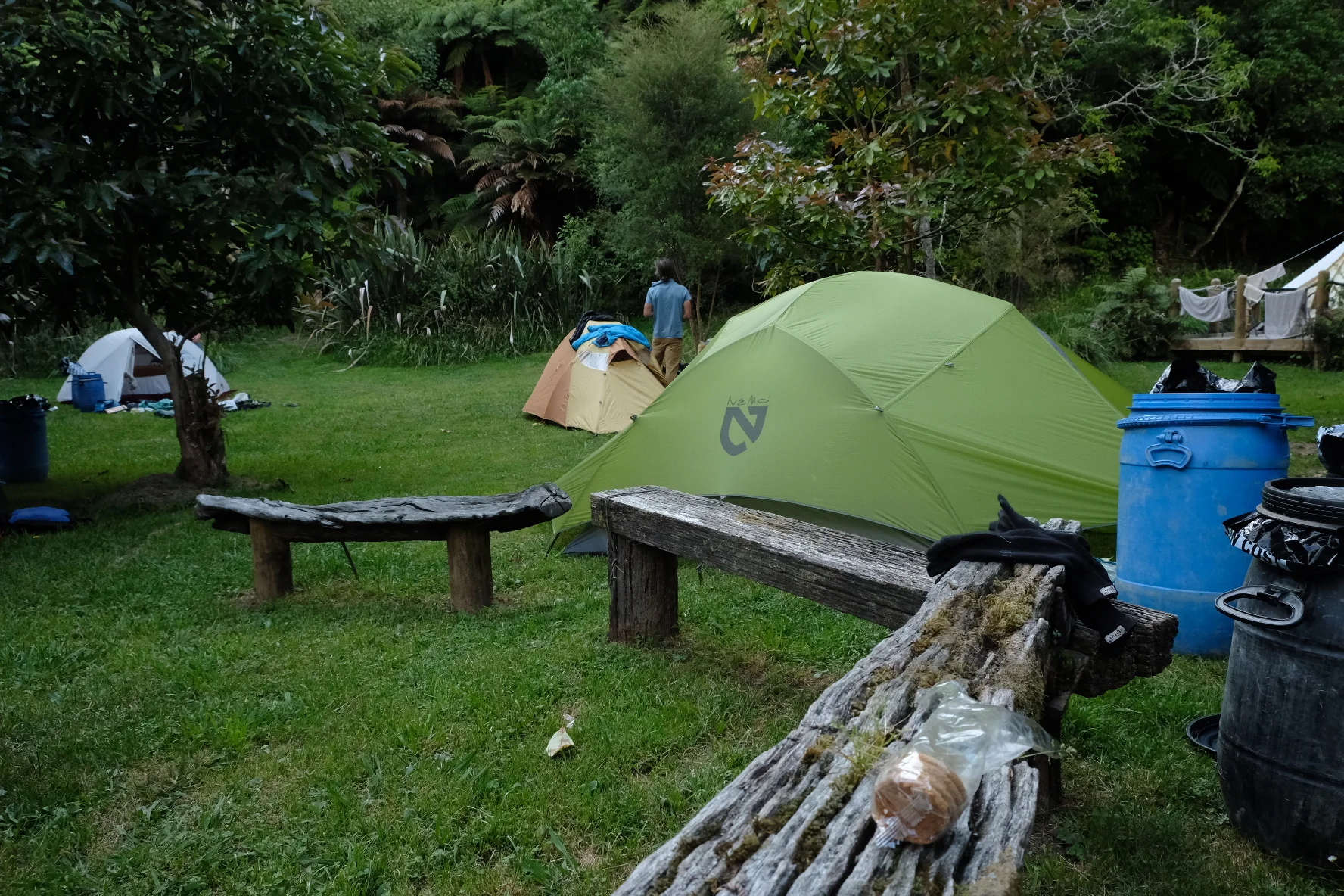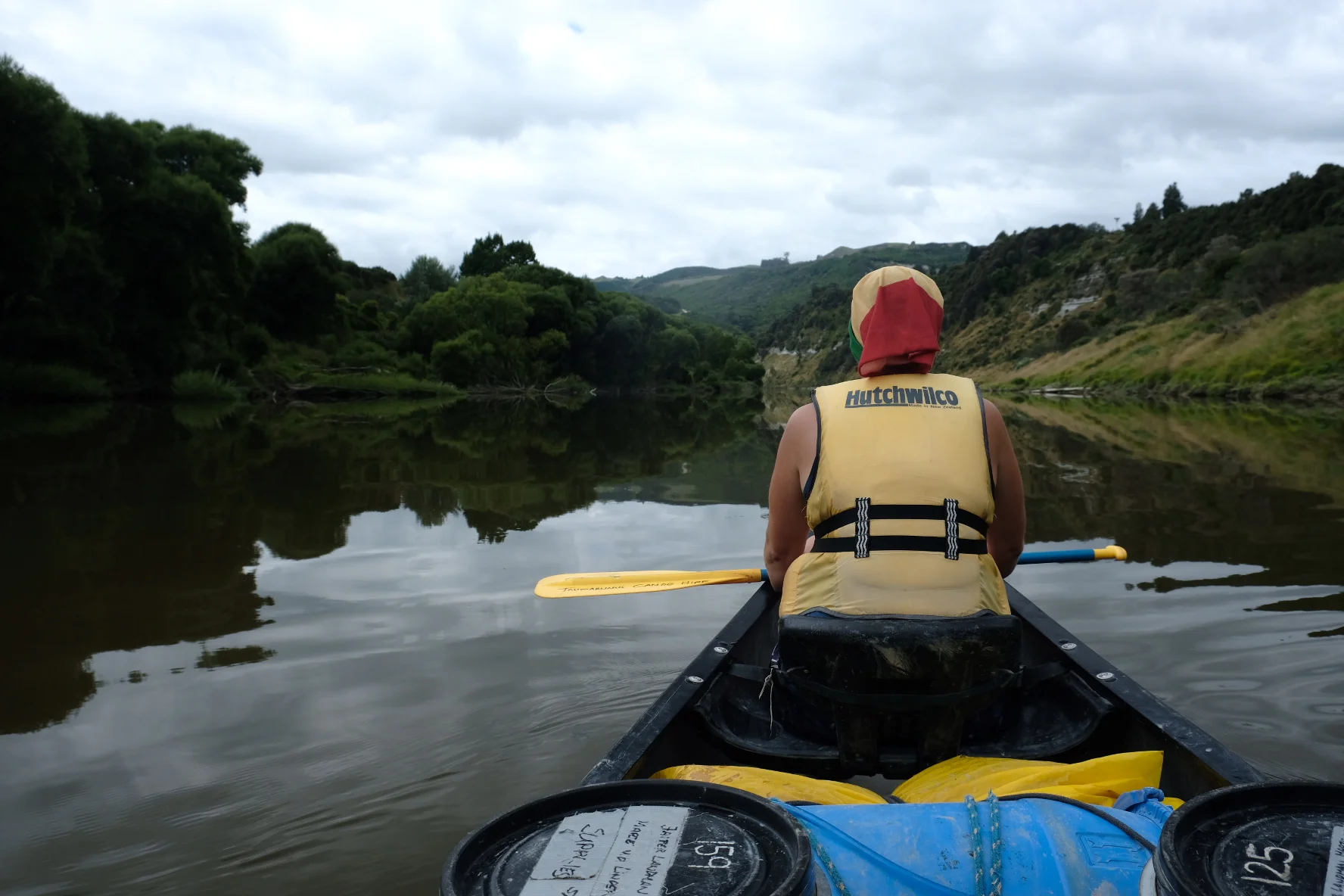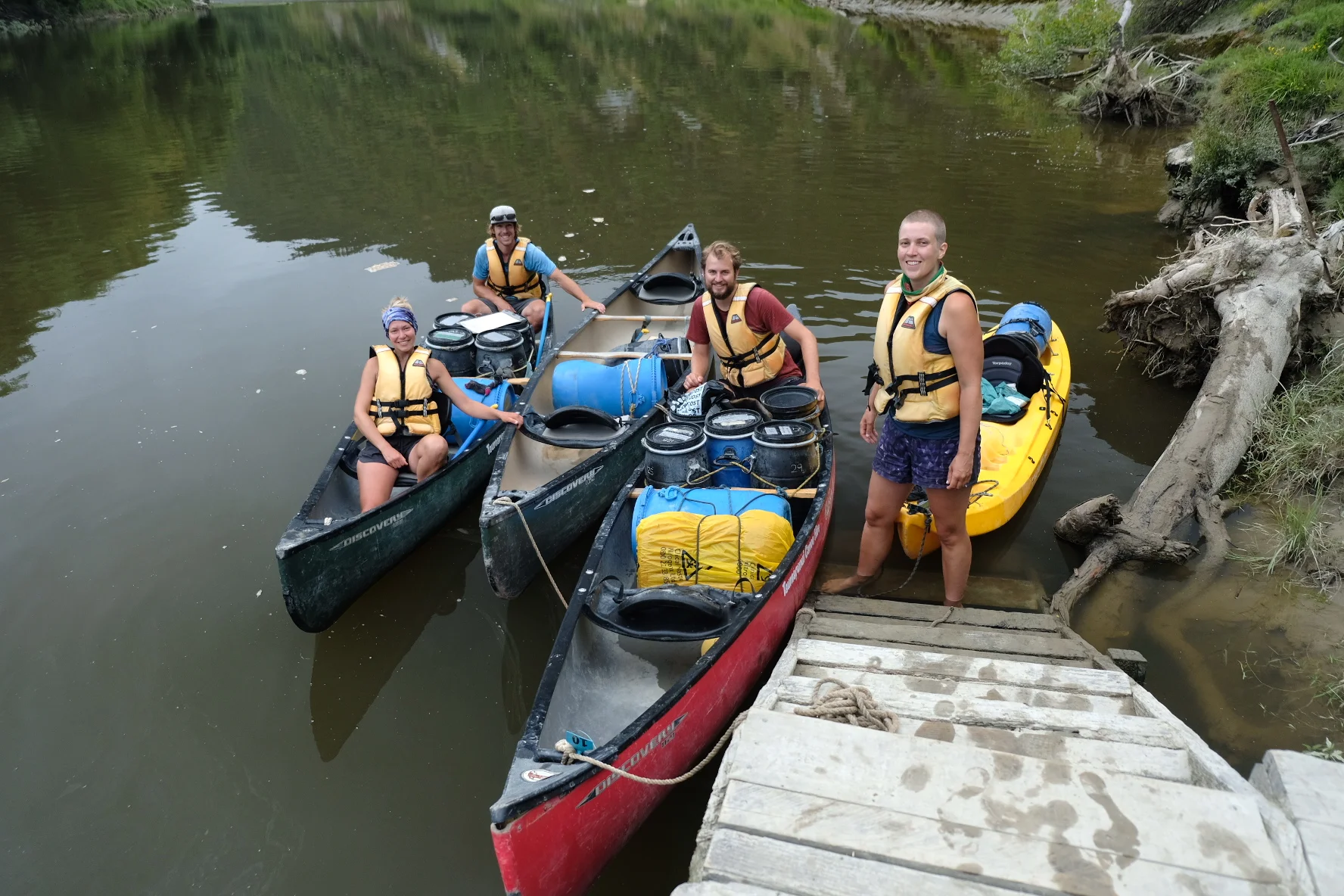Te Araroa part 9: the Canoeship Enterprise
The problems with paddles
The river: the final frontier. These are the voyages of the Canoeship Enterprise. Its six day mission: to explore strange new rapids, to seek out new sandflies and new campsites. To boldly capsize where no canoe has capsized before.
(Cue clunky 60s intro music)
Yeah, we named our canoe the Canoeship Enterprise. Sue me.
We have arrived in Whanganui Space
“Why do we have a canoe?” I can hear you asking. “Aren’t they a bit heavy to carry?” Yeah, they are. The trick is to let the canoe carry you. That way, you can go more than 200 km downstream on a river without having to walk. Genius. Canoeing down the Whanganui river is an official part of the TA, and we decided we might as well do it properly so we hired canoes for the entire journey from Taumarunui to Whanganui, which is a bit longer than most TA hikers do. Many walk from National Park village to Whakahoro or even further, and then hop on a canoe there. However, we had been reliably informed that many of the best rapids were between Taumarunui and Whakahoro. Accordingly, after Christmas, we caught the bus to Taumarunui. I still can’t understand why public transport is so lousy in NZ. The Intercity bus was crammed, so you’d think someone would have the bright idea to run a couple of more buses as there is obviously demand.
Anyway, arriving in Taumarunui we just had time to buy some last minute supplies (fruit, cheese and cheap supermarket champagne) before we were picked up by the people from Taumarunui Canoe Hire who allowed us all to camp on their lawn for the night. We would be canoeing with Pauline and Sebastian from Belgium, Eva and Windy from the US and Katie and Carson from Canada. We’d met the last two briefly just before Kerikeri, where they were sitting under a tree, eating the last of their food. No chances of anyone running out of food on this trip. The canoes would do the carrying for us, so we packed barrel after barrel full of snacks. In the early hours of the evening, Courtney showed up with her dad, a pack full of mint slices, and burgers for all of us. We hadn’t seen her since Auckland so we had a lot of catching up to do.
Emergency: barrel core breach!
The next morning we got a detailed safety briefing. We were taught how to enter a rapid and most importantly, how not to enter a rapid. Basically, you should not hit any rocks. If you do hit a rock, it’s very important to hug the rock. Do not lean away from the rock or your canoe will be smashed by the current. They then told us how to stow everything in the canoe. Jasper and I shared one while Courtney had a sit-upon kayak as she was on her own. Canoes can carry barrels more easily than kayaks, so Courtz only had one barrel on hers while we had five barrels of food and gear, plus a big one for the tents and shoes. Our backpacks sadly did not fit into the barrels, so we strapped them together and put them inside a big yellow plastic bag marked “Clinical waste” that Courtney had snaffled from somewhere. This bag was strapped securely to the canoe because we did not want it drifting off downstream. Imaging trying to ask someone to please just hand over the bag and don’t bother calling the police. I can see the newspaper headlines already.
Shore leave
Anyway, with our clinical waste in place, we set off! The river was high after recent rainfall over Christmas so it was easy going. The sun was out and we were glad to get splashed a bit by the rapids so we could cool down. Courtney decided to name her kayak the Kiwi Banana, on account of its yellow colour. Jasper and I quickly named our canoe the Canoeship Enterprise because it was absolutely awesome. It was also red so we knew there would be trouble at some point. We’d been told that we would either tip over in the first half hour, the last half hour, or not at all. Accordingly, we spent a nervous first half hour zigzagging through the rapids while Jasper got the hang of piloting the Canoeship Enterprise. We quickly realised that I needed to keep my centre of gravity as low as possible so we entered rapid after rapid with me crouching down with my head just above the bow of the canoe, keeping a lookout for rocks and snags. We made good time and had plenty of time to stop for a carrotcake and gingerbeer at the Lavender Farm, and for an extended lunch break and swim. It was after lunch that we entered into uncharted and potentially hostile territory.
The Canoeship Enterprise is a ship of science and exploration, and we managed to study nearly a dozen fields of science in just one rapid right before Poukaria:
We have plotted a course through the Whanganui gorges
Geology. There was a rock. Having a rock in a rapid is a Bad Thing.
Pauli exclusion principle. The rock and the canoe cannot occupy the same space at the same time. One of the two must move.
Newton’s laws of physics. The force acting on the rock is equal to the mass of the canoe times its acceleration. An equal but opposite force acts on the canoe. The canoe is a lot lighter than the rock, which is attached to the earth. Hence, the canoe will be pushed aside and tip over.
Archimedes’ principle. Humans wearing lifevests will float.
Knot theory. If securely tied, all barrels will stay in place (as will any plastic bags which may or may not contain clinical waste).
Hydrodynamics. When you’re in a rapid, holding on to a paddle with one hand and a capsized canoe with the other, just go with the flow.
Murphy’s law. Courtney saw the Canoeship Enterprise tip over. She managed to dodge our rock and then hit the next one.
Sod’s law. A rescue party of two random guys in a canoe will arrive just as you reach calmer water and are starting to swim to shore.
Dunning-Kruger effect. Said rescue party thinks you’ve been in the water for ages and that their canoe skills are far superior to yours.
Law of the lever. The canoe can easily be flipped right side up once you have two feet on the ground.
Thermodynamics. Drying is a spontaneous process, helped along by the hot NZ sun.
Full impulse!
Honestly, of all the ways to fall out of a canoe this was pretty nice. We both saw the rock (just slightly too late), both felt it hit the canoe on the side, and both had time to think about what was happening before we were gently tipped into the water. We kept hold of our paddles, grabbed the canoe and just cruised downstream until we managed to pull it ashore. It was quite funny, because once Jasper and I checked that we were OK and had our paddles and everything, we realised we had to shout to Courtney that we were fine, only to look back and see her floating along next to the Kiwi Banana. We emptied the water from the canoe and continued on our merry way. Courtney lost one jandal but we found it again further downstream, bobbing merrily along the current. At least we hadn’t gone down the waterfall. Along the inhabited stretches of the Whanganui there are plenty of rock walls, that were built to regulate the flow of the river. Bits and pieces of these remain and there are sometimes sneaky gaps in them. One of these gaps leads to deceptively calm looking water, but that stretch ends in a small rocky waterfall. I had memorised this section from the safety briefing, so we went to the side of the rock wall rather than through the sneaky gap. Pauline and Sebastian went through and probably became the first people to successfully pilot a canoe down that waterfall. Windy and Eva went through as well but crashed into a rock. They were a bit rattled but otherwise all right and decided to camp at the next campsite rather than go on, so we didn’t see them anymore. We paddled more than 50 km that first day, to Maharanui campsite. Only us TA paddlers were there and it was pretty neat having the camp to ourselves.
Mr. Philip, First officer
The next day would be a long one as well. At Whakahoro, we stopped for a morning coffee/gingerbeer at the cafe. It was a short walk up a gravel road which was tough for Jasper since he had some extensive damage to his right jandal and had to go barefoot. Still worth it. Many people start the Whanganui Journey at Whakahoro, which is a Great Walk (Paddle?). We definitely noticed the river becoming busier. It was also fun to see how the landscape along the river changed, from farmland to native bush with some spectacular gorges. We had really gotten the hang of steering the Canoeship Enterprise so there were no further scientific expeditions. We did make good use of some of the wavefunctions of the river though (sorry), and spent some time communicating in Treknobabble. We had a quick lunch at a campsite with a billion wasps so we were glad to get out of there and on to our own campsite, Mangawaiiti. In contrast to yesterday’s campsite, this one was crammed with people and we could just about tie our canoe up and pitch our tent. We had a chat with a guy doing the Great Paddle and it turned out he had hiked the TA a couple of years ago.
Polarise the hull!
Dorrington of the Kiwi Banana
Set a course to nowhere, warp 3
Our third day on the river was nice and short, so we just floated rather than paddled. This left us with plenty of time for Black Stories, at which Courtney was alternately extremely good and absolutely lousy. We stopped at the Mangapurua landing to do the short sidetrip to the Bridge to Nowhere, which was built in the 30s as part of a scheme to connect a settlement by road. However, the valley proved too remote and rugged to farm and the settlement was abandoned. We got to the bridge not long before the tourist hordes in jet boats arrived. Once it got too crowded we decided to go. Good thing too, or I would’ve started an argument with some guy who was spouting nonsense about 1080. 1080 is what they call sodium fluoroacetate, which they use in NZ to kill introduced species such as rats, stoats and possums which kill many native birds. You can have your own opinion about whether or not to kill introduced species to save native ones, but you can’t have your own facts. Sodium fluoroacetate does not contain the highly explosive and dangerous metal sodium. Saying that just shows you should’ve paid more attention during chemistry. Anyway, I decided to just let the guy rant rather than start a fight (there are some real weirdos in the anti-1080 camp) and we went back to our canoes. It took a bit of manoeuvring to get back to the Canoeship Enterprise and untie it, but after a bit of hopping around we managed it and resumed our leisurely float down the river. We reached the campsite at Ramanui in time for a late lunch, and set up our tents together. This sounds very easy, but it’s a bit more complicated than that. The first thing to do when you arrive at the campsite is to tie up the canoe. Katie and Carson knew lots of knots because they had spent several days in Kerikeri library reading books on knots while waiting for an injury to heal. But even they had never heard of my specialty knot: the Double Philip. Let me explain to you how to tie it: find a sturdy tree trunk or similar. Wrap the rope around it a couple of times. Make some loops, pull the rope through that, and basically just tie whatever knots you can think of in whatever order you prefer. This is a Single Philip. If you have lots of rope left, or you doubt the strength of the Single Philip, then tie some more. You now have a Double Philip. But be careful and make sure you don’t accidentally tie a Half Philip. You can recognise this easily: if you step back to admire your handiwork and the canoe floats away downstream, it was a Half Philip. The second thing to do once you reach the campsite is to carry all the heavy snack barrels up a slippery muddy slope full of sandflies. I’m pretty sure any arm muscles we developed during this section on the TA were the result of carrying barrels rather than paddling. Whew. All the campsites are perched high above the river so we got a good workout. Ramanui was awesome by the way. Great place to relax in the sun. We had some great chats with Katie and Carson, who have done a lot of cool hiking in Canada and have interesting stories of coming face to face with bears. New Zealand luckily does not have any animals that can kill you, except of course cows (in particular Jersey cows) and sandflies which will eat you alive.
Mr. Landman, Helmsman
Gorgeous gorges
From Ramanui we paddled to a campsite called the Flying Fox, where we would spend our New Year’s Eve. This was the last section along the Great Paddle so we would be saying goodbye to most of the other people on the river, including Pauline and Sebastian. Before we got to Pipiriki, we had to face some interesting rapids (hence the warning they gave us at the beginning, that we might capsize in the last half hour before Pipiriki). First up was a rapid which some cheeky sod had named the 50/50, because that’s apparently the chance you have of getting through it. We cruised down it, ending with a not-so-smooth turn into an eddy. Still, we made it through. Courtney managed it too, as did Katie and Carson (their canoe was named the Moist Green Booger, in case you were wondering). Next was a rapid with a massive 1 m pressure wave that the Canoeship Enterprise blasted through. I got completely soaked, because I was crouched low in the front and that wave towered over me. The wave washed Courtney right off the Kiwi Banana but she climbed back on before the end of the rapid which was pretty impressive to see. Then came a rapid which I’m pretty sure was called the Kobayashi Maru. We went for it as usual. There was a big rock. No problem, we remembered our safety briefing which said just to pick a side and go for it. The rest will be written in Treknobabble: Captain, enemy rock straight ahead! Adjusting course, seven degrees to port, impulse only. Course laid in. Captain, another rock has decloaked off our port bow! Evasive manoeuvres! Fire thrusters! Engineering, divert power from forward phaser banks to thrusters! Warp engines are down! Polarise the hull plating! It’s not working, the rock is emitting a neuron disruption signal! Send out a tachyon beam, set shields to a rotating frequency! Main power is gone! Shields at 12%, hull is beginning to buckle! Abandon ship! Abandon ship! Aaaaaaah!
Wormhole
For those who need a translation: we tried to go left of a big rock, then saw to our dismay that there was another one beyond that. It was too late to dodge and the Canoeship Enterprise crashed straight into a rock, did some sort of weird somersault and threw us out. This was nothing like the gentle tip we’d had on day one. I saw the rock approach, felt a jolt, got a knock on the head and next thing I knew there was white water everywhere and the bloody Canoeship Enterprise was on top of me. I tried to push it off but we were still in the rapid and I couldn’t get a good grip on it. My lifevest was pushing me up, further under the canoe. I inhaled some water but then managed to grip a side and push myself backwards, out from under the canoe. It felt like I was trapped for half a minute or so, but the others said I surfaced quickly so I guess it really is true that time slows down when things get sticky. The Canoeship Enterprise was floating upside down, perpendicular to the current, with me and Jasper behind it. Coughing and spluttering, I managed to grab hold of a paddle only to find that Jasper was holding on to the other end. No worries, Courtney rescued my paddle. And Katie and Carson towed the Canoeship Enterprise to spacedock/shore. We tipped it back up and discovered it had suffered some damage to the bow. Structural integrity is down to 82%, captain... oops. But all the damage was above the waterline so it was still a functioning canoe. We took the remaining rapids more carefully as I had no wish to repeat the experience and get another bruise on my head. Because of the buzzcut, we could see it quite easily. I’m pretty sure I hit my head on the relatively soft clinical waste bag which was lucky!
Deep Space Palace 9 at Flying Fox
After waving goodbye to Pauline and Sebastian at Pipiriki, and the five of us continued downstream to the Flying Fox where we met some familiar people. Iben and Valeria had taken a zero day there, together with an American guy called Laine and a Swiss guy called Ralph. We celebrated New Year’s Eve together with cheap supermarket champagne and a pattern game called Magic Spoon, which consisted of someone saying a rhyme about their spoon and then everyone had to decide to whom the spoon would go next. Easy. We only just made it to midnight and were all in bed by a quarter past, completely exhausted.
Lt. Van der Linden, chief engineer
We had a lie in the next morning, because we’d been told that it would only be four or five hours of paddling until the next campsite. However, the water level in the river had gone down quite a bit so the current wasn’t pushing us along anymore. The wind had come up too. It followed the river valley exactly so it kept pushing us upstream. We had to keep paddling to avoid going upstream so we got quite a workout. Let’s just say it took us a bit more than four hours to reach the next campsite, at Hipango park. This was a really pretty campsite, maintained by the council and free to use! There was a big cooking shelter where dinner preparations were already in place by a few others. We talked a bit with Helen and Malcolm (“together, we’re Melon”) and Rock Steady, the hiker we’d met briefly first day. He’s an ultralight hiker and has a tent/tarp that doubles as a poncho. It would be interesting to see in use, but rather him than me because I really don’t fancy sleeping so unprotected from sandflies.
Deep Space Palace 9 (right) in Hipango space
We had an early start the next morning because we wanted to avoid the afternoon wind. We spent a few relaxed hours cruising downstream, leaning back and with our feet up. Katie and Carson hadn’t gotten the hang of Magic Spoon yet so we played some Magic Paddle. There were farms and roads on the banks of the river, and as we approached Whanganui (that’s also the name of the town) we met a paddlesteamer making its way upstream. We could hear the commentary describing interesting features along the river. One of these features was our little group of two canoes and a kayak! After a few more bends we arrived at Whanganui holiday park, where we emptied all our barrels and stacked the canoes. The holiday park is very welcoming to TA hikers. It’s right on the river, we got discount rates and the owner dropped us off in town so we could resupply, buy snacks and binge on Mexican food. More importantly, we could do laundry to wash the smell of the river out of our clothes. I was pretty glad that my camp clothes were clean so that I didn’t have to hang around in my rain gear while waiting for my washing machine, as Courtney did. It was another scorchingly hot day and I’m pretty sure I would’ve melted.
Crew complement of the Federation Canoeship Enterprise, next to the captain and helmsman of the Moist Green Booger
We had a final snack party together that evening, because everyone had different plans for the next days. Courtney was planning to walk from Whanganui to Palmerston North, while Jasper and I wanted to hitchhike to skip ahead to the Tararuas to do some extra hiking there. Katie and Carson didn’t really have definite plans yet. It’s quite sad to see our little group fall apart after six amazing days on the river but I’m sure we’ll meet again further down the trail!
Federation steamship Intrepid

